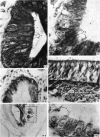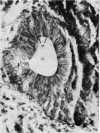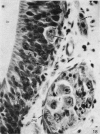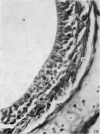Abstract
The morphology of the vomeronasal organ complex was histologically described in eight out of fourteen chiropteran species investigated. Of the six families examined, all except the family Pteropodidae (suborder Megachiroptera) were found to have at least one member possessing the organ. The organ is best developed in phyllostomatids. It is absent in vespertilionids (including a Myotis embryo) except in Miniopterus. An accessory olfactory bulb is reported for the first time in the latter. The organ is described for the first time in Rhinopoma, Megaderma, and Hipposideros. The organ in Rhinolophus is also described. Homologous anterior nasal cartilages and patent nasopalatine ducts are present in all species. The organ occupies the anterior ventral nasal septum region. In Megaderma and Hipposideros it is level with the nasal cavity floor. Areas of epithelium similar to olfactory epithelium have been observed in some organs. Epithelia, vascular sinuses, vomeronasal nerves, paravomeronasal ganglia, accessory olfactory bulbs, and vomeronasal glands have been investigated. In bats with regressed or rudimentary organs (Megaderma, Rhinopoma, Rhinolophus, Hipposideros) accessory olfactory bulbs could not be identified. Thus, presence of the organ does not necessarily indicate presence of the accessory olfactory bulb. Septal pockets located superior to the organ complex and lined with pseudostratified columnar epithelium are described in Hipposideros and may play a part in nasophonation. A unique role is proposed for the organ in the feeding behaviour of Desmodus. The desirability of extending the useful terms 'diosmatic' and 'monosmatic' to all vertebrates in reference to their respective possession or lack of the vomeronasal organ is suggested.
Full text
PDF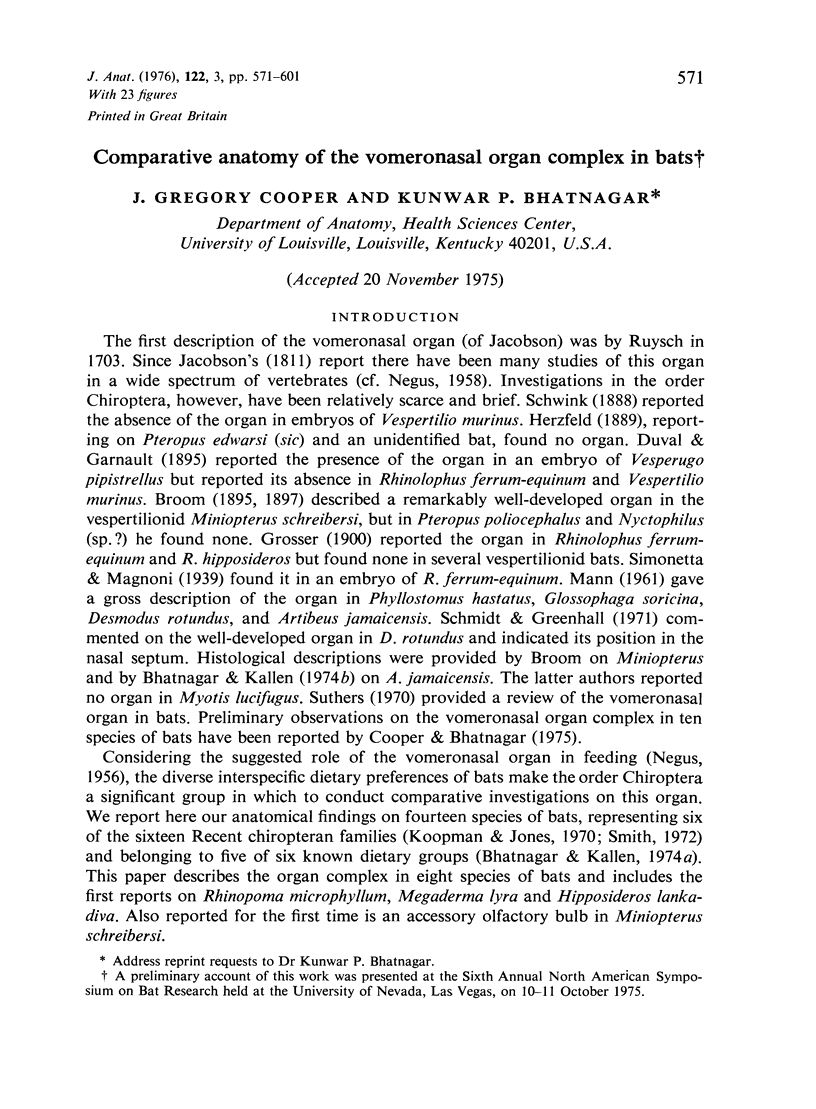
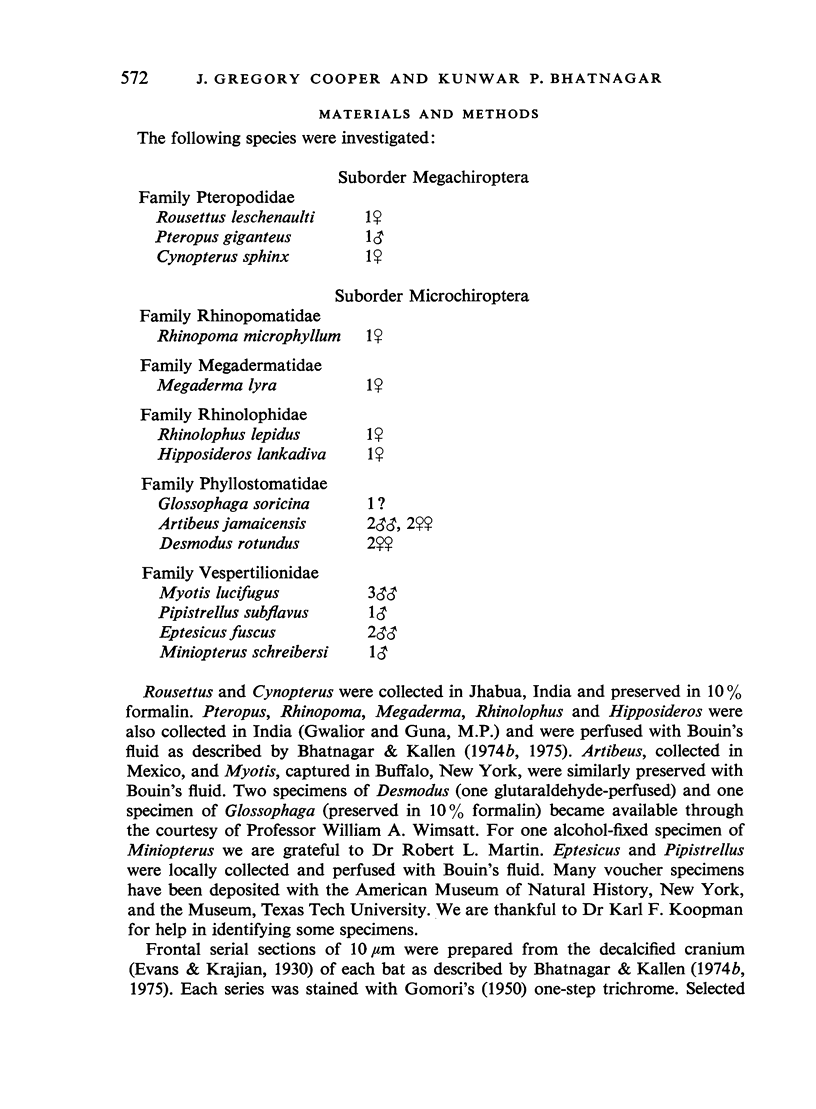
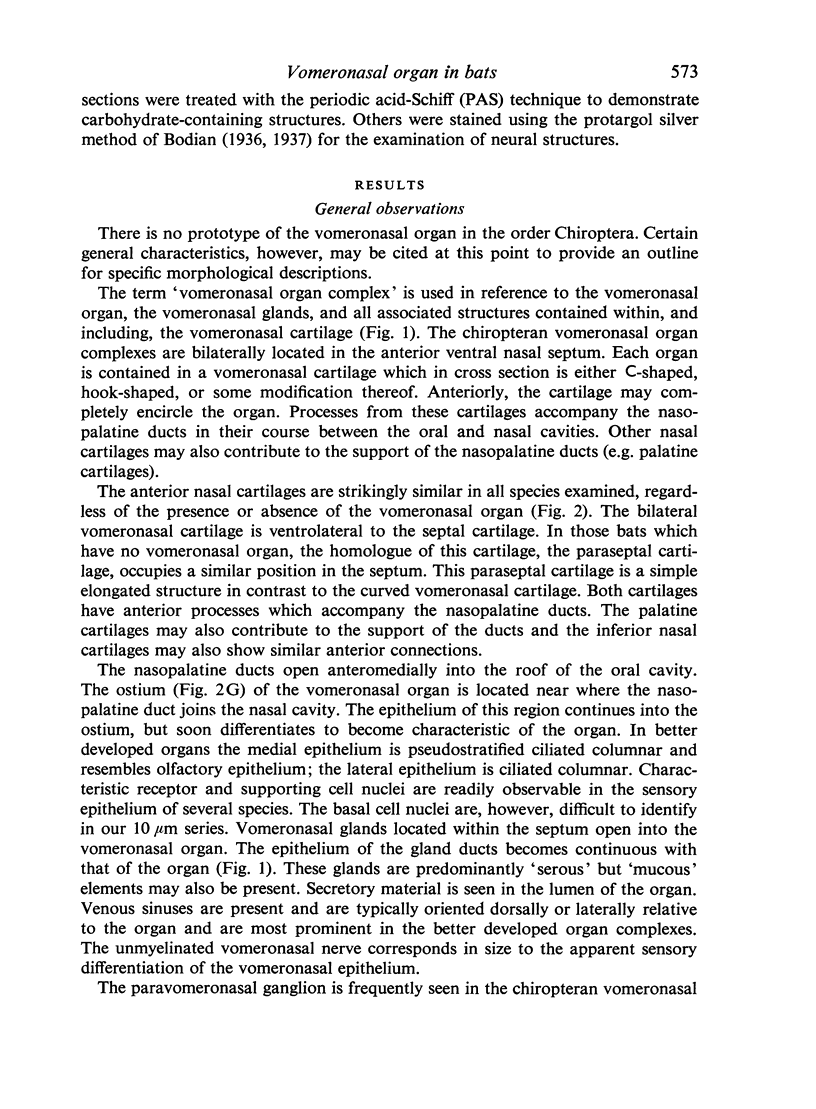
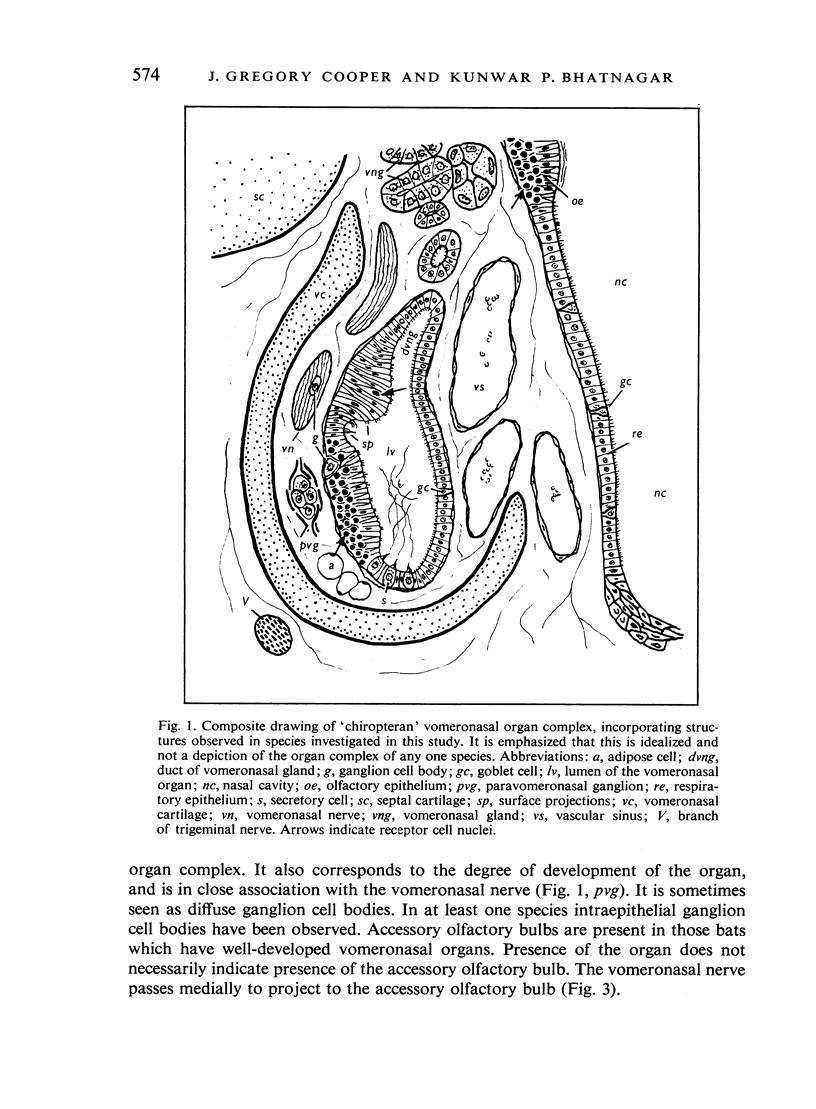
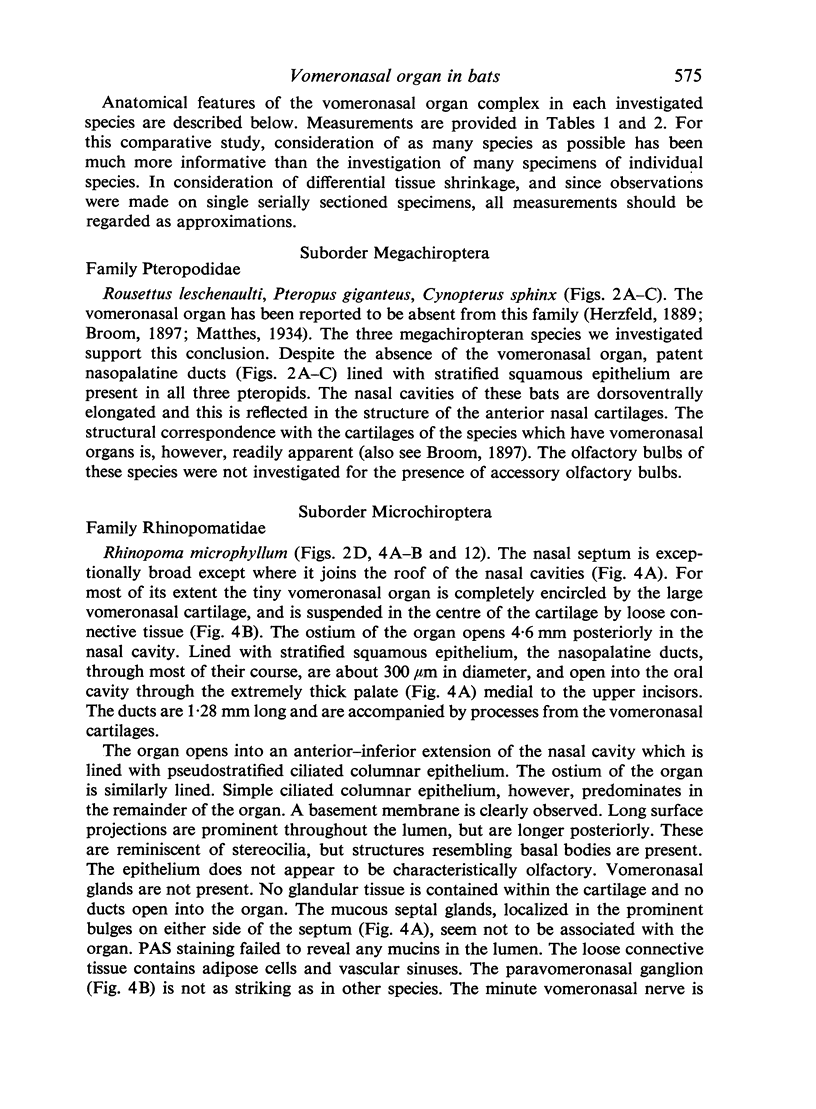
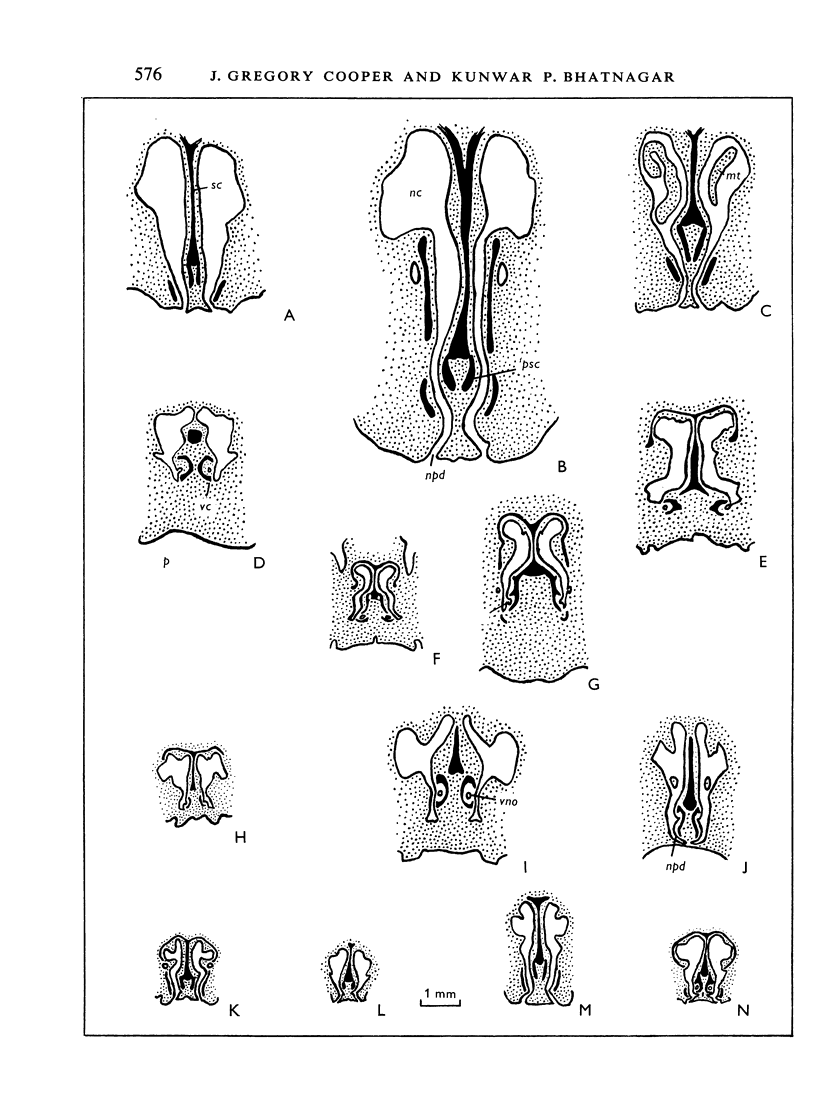
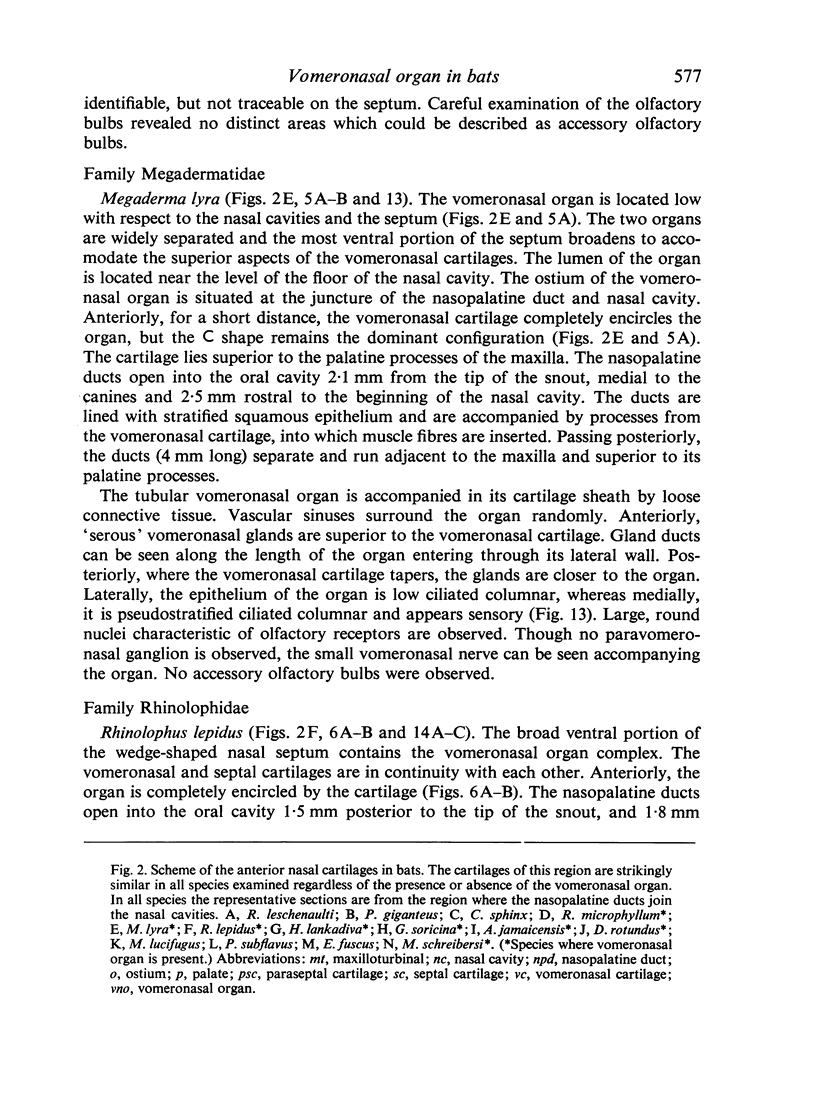
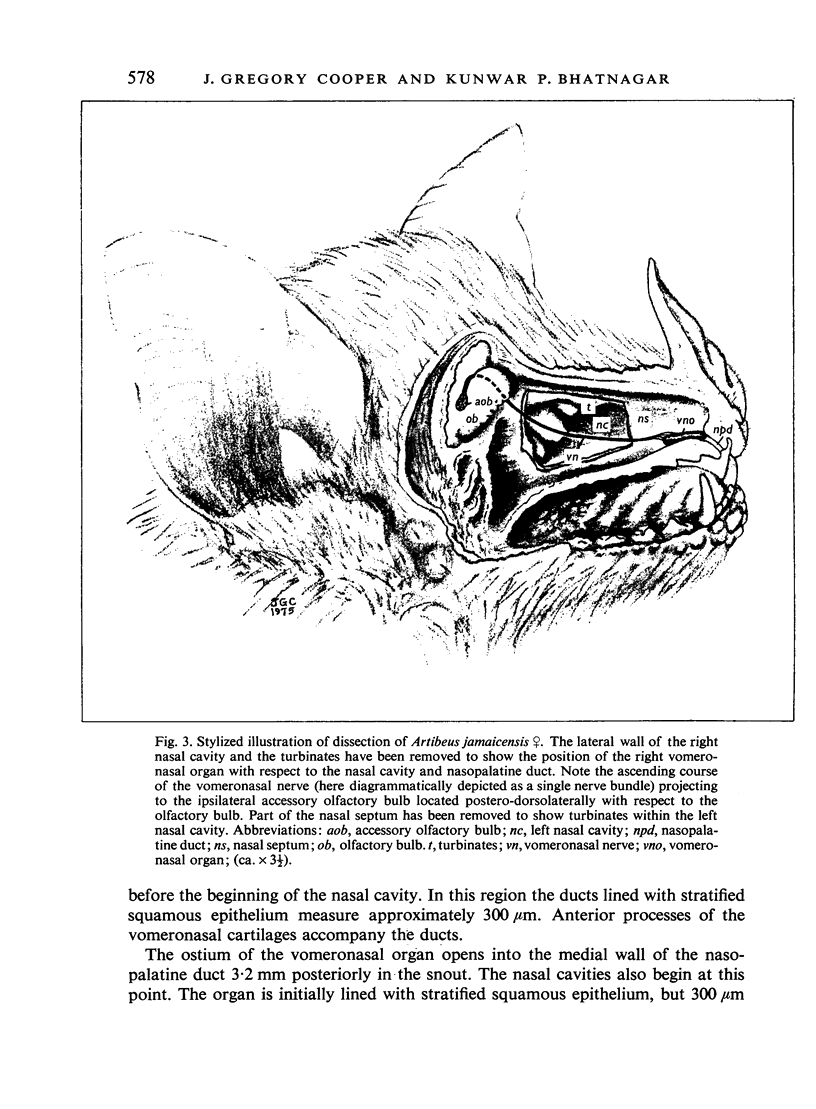
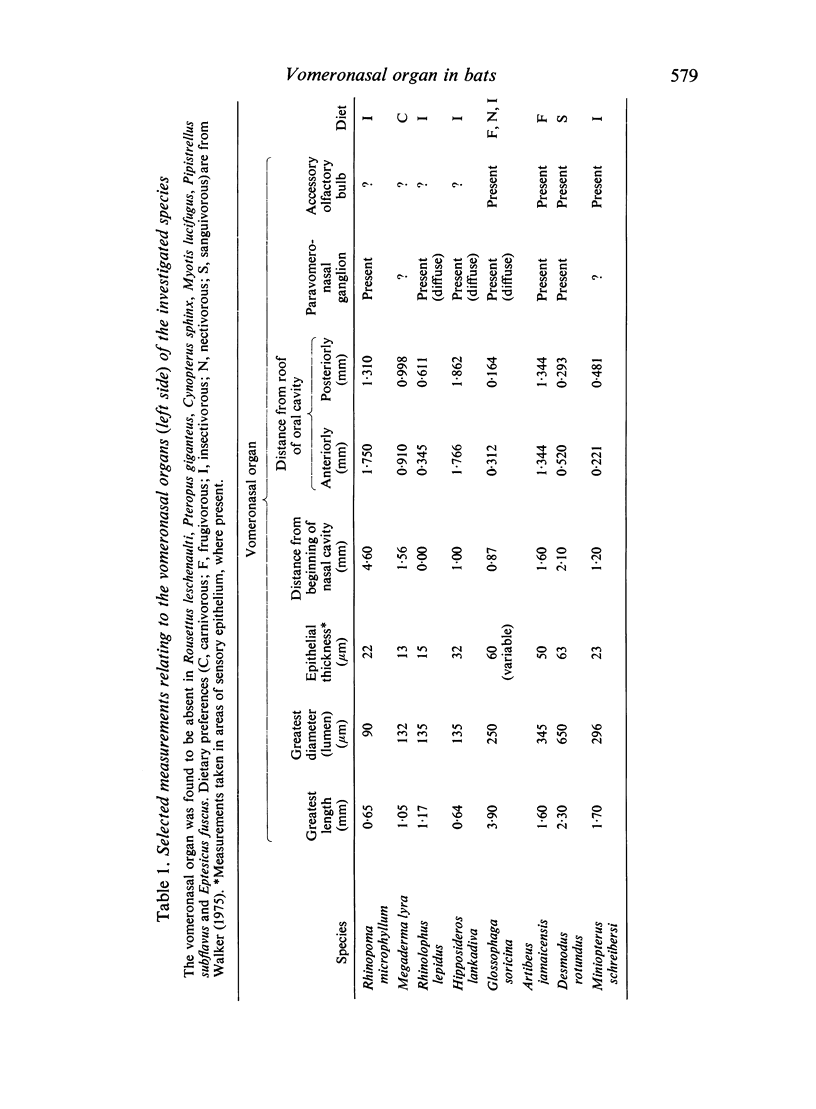
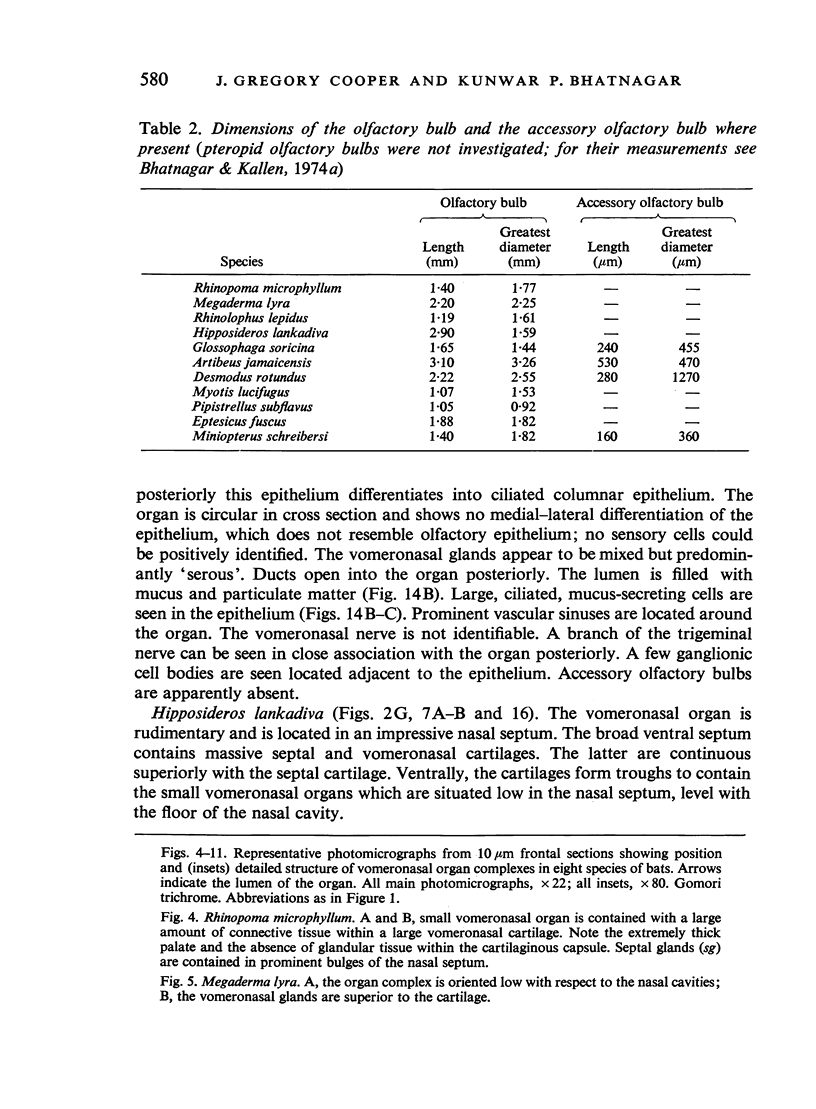
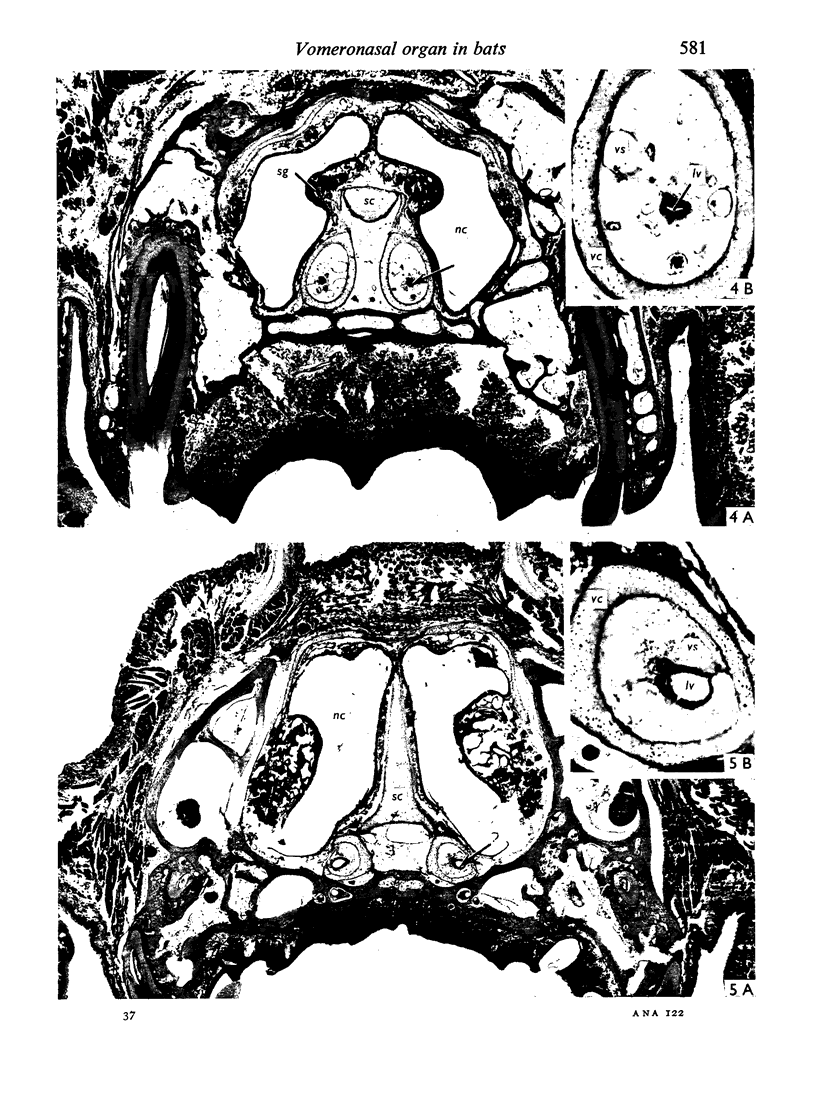
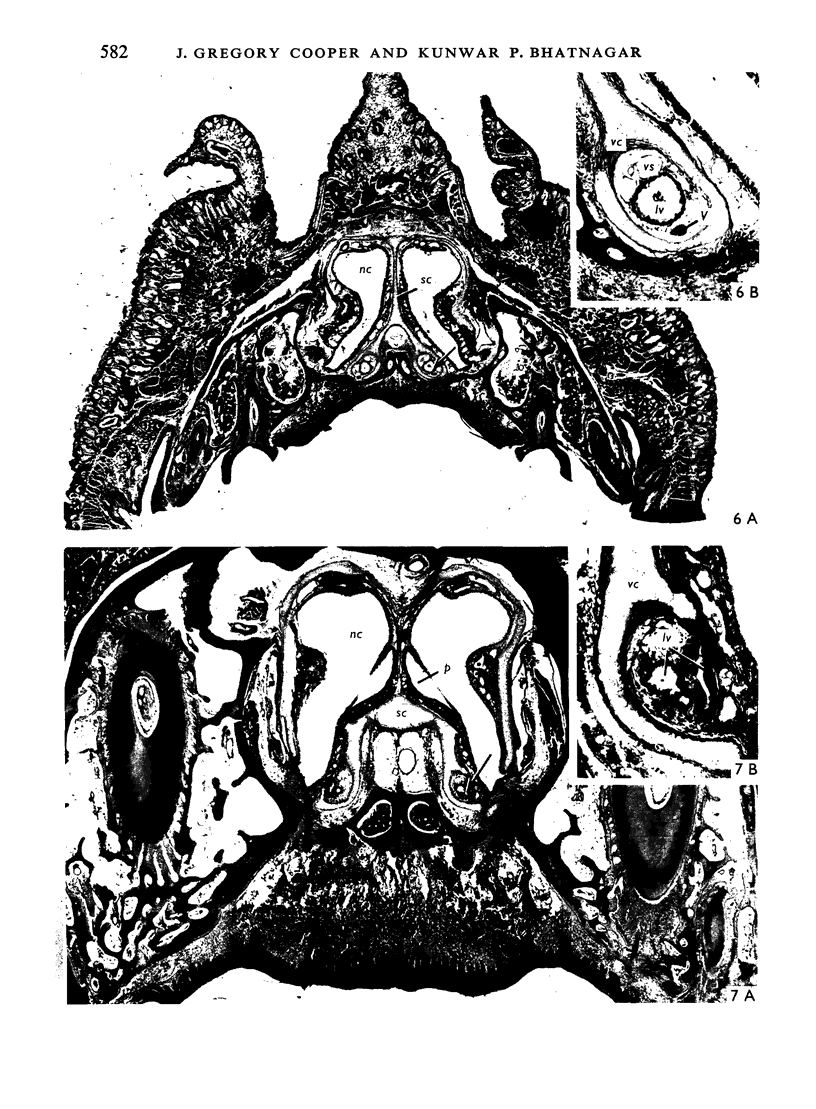
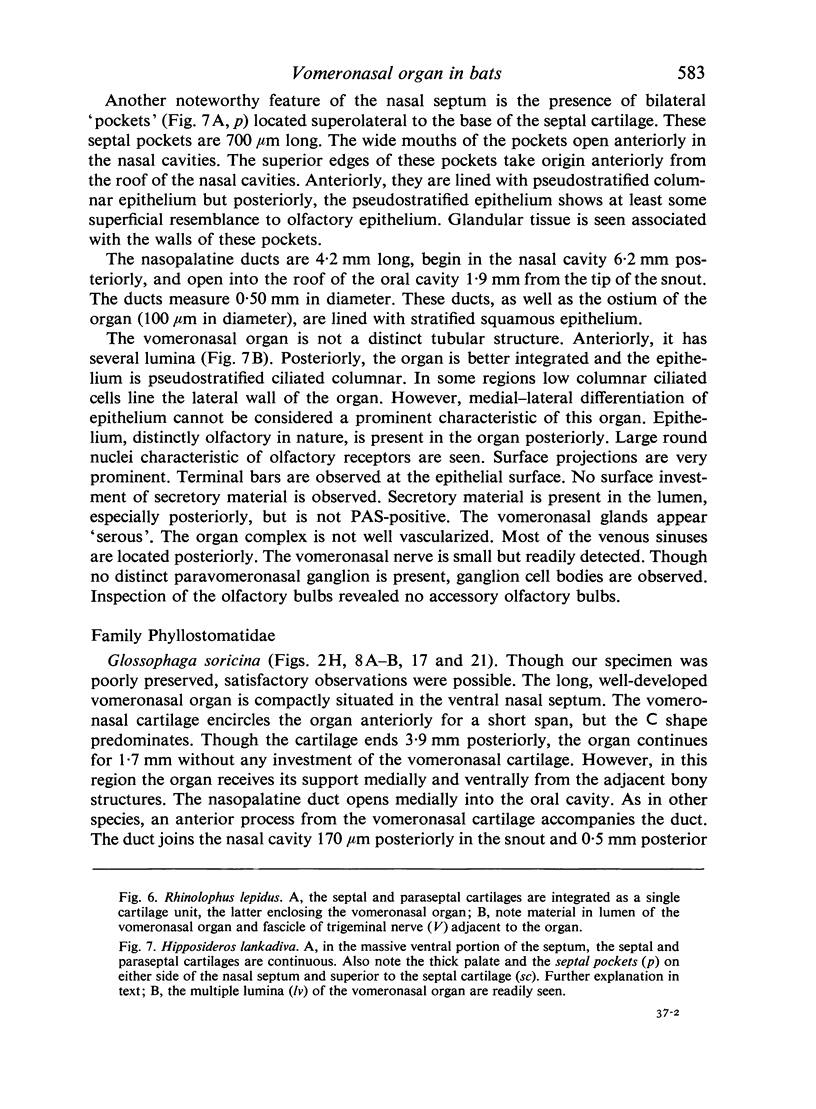
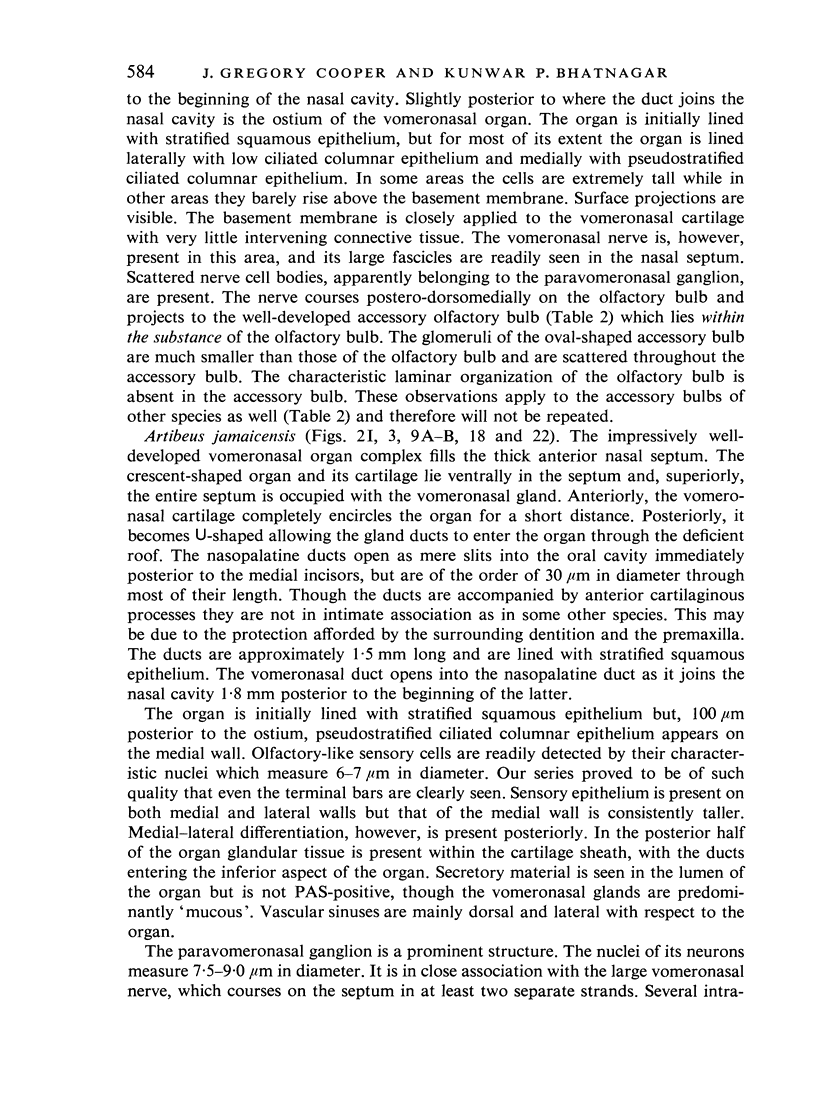
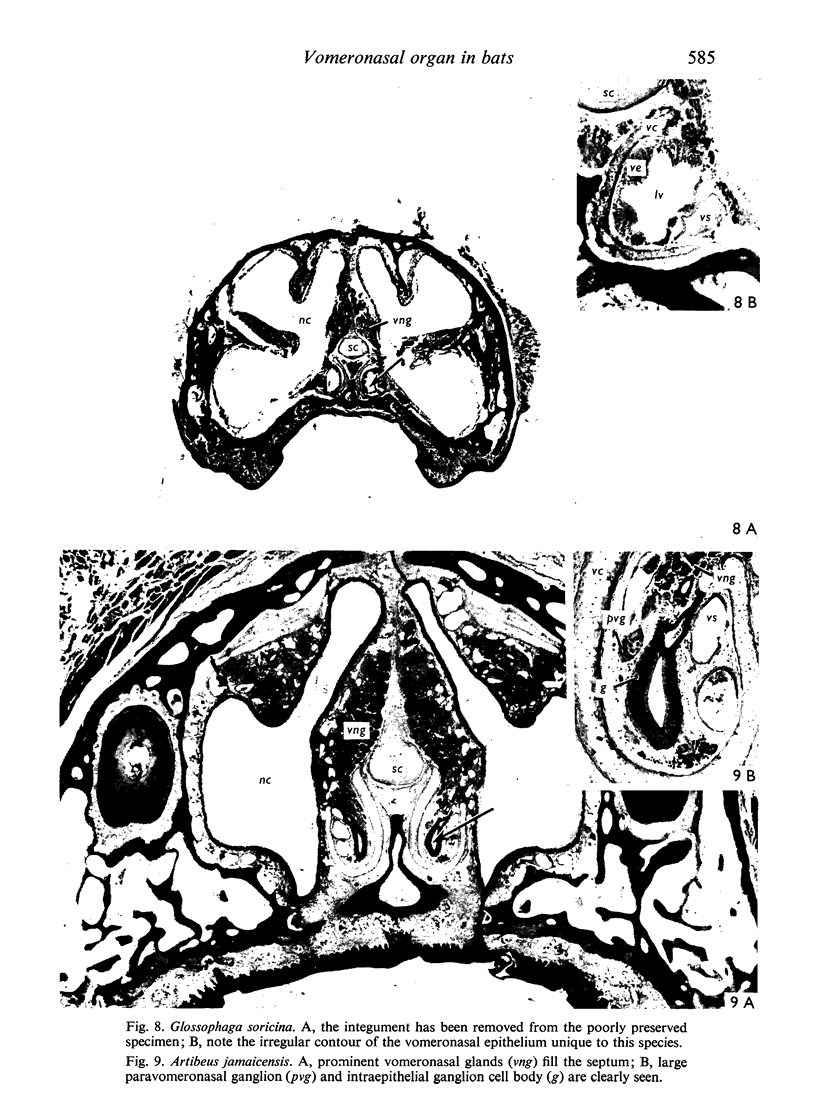
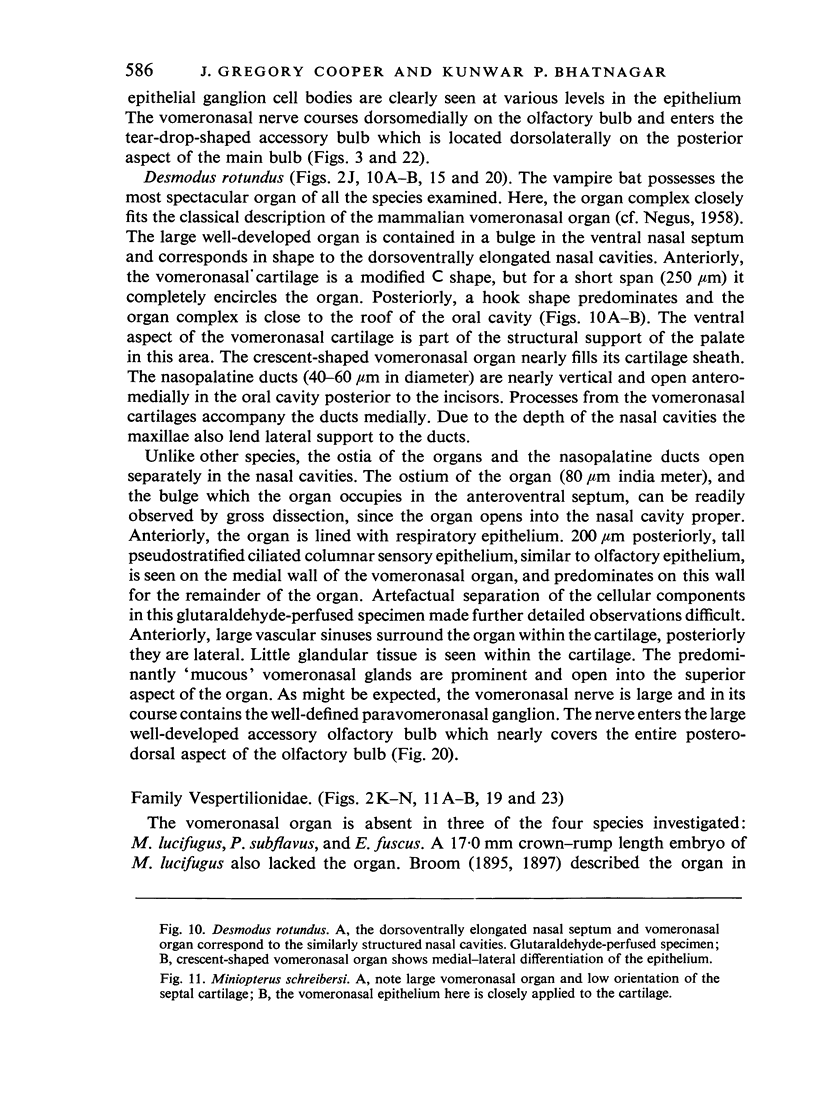
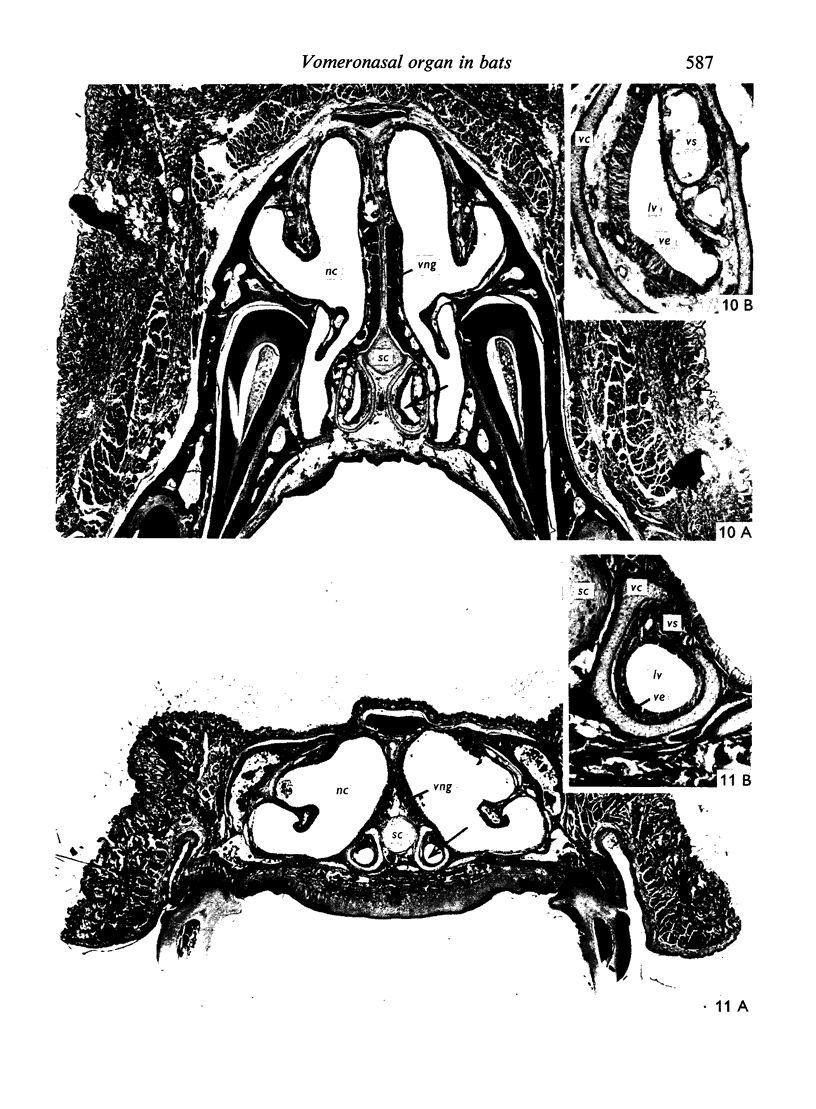
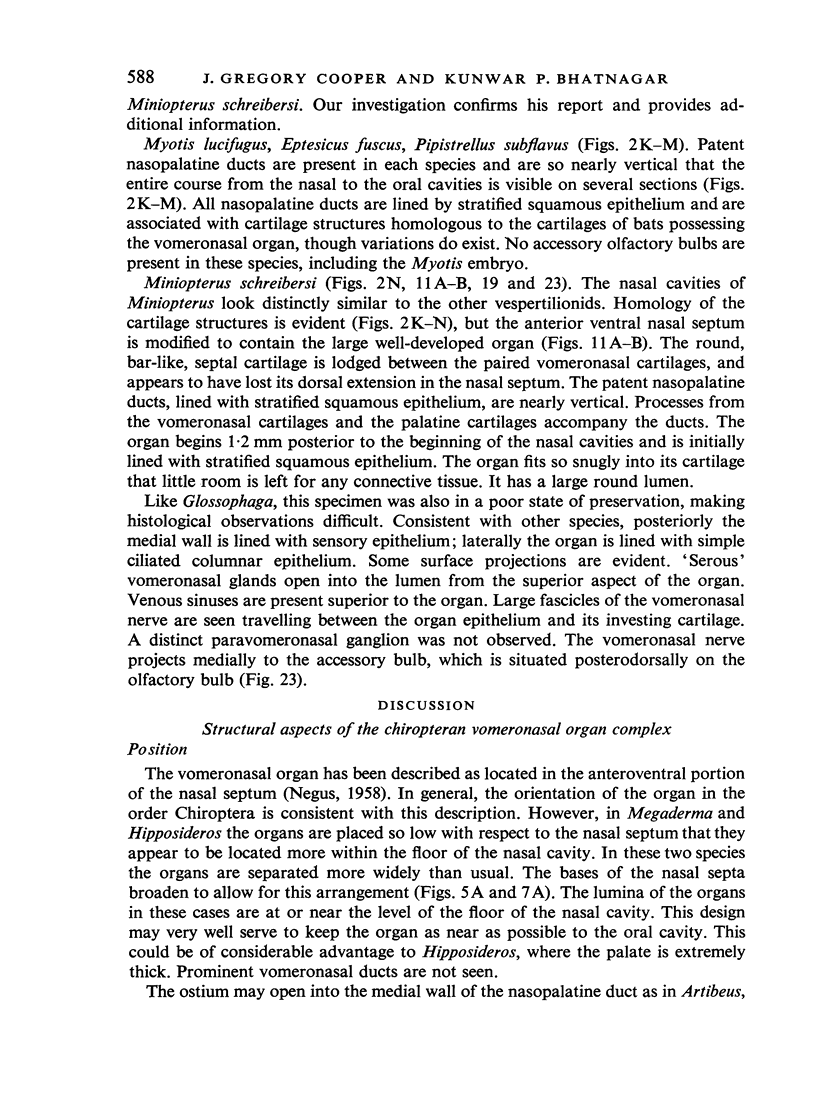
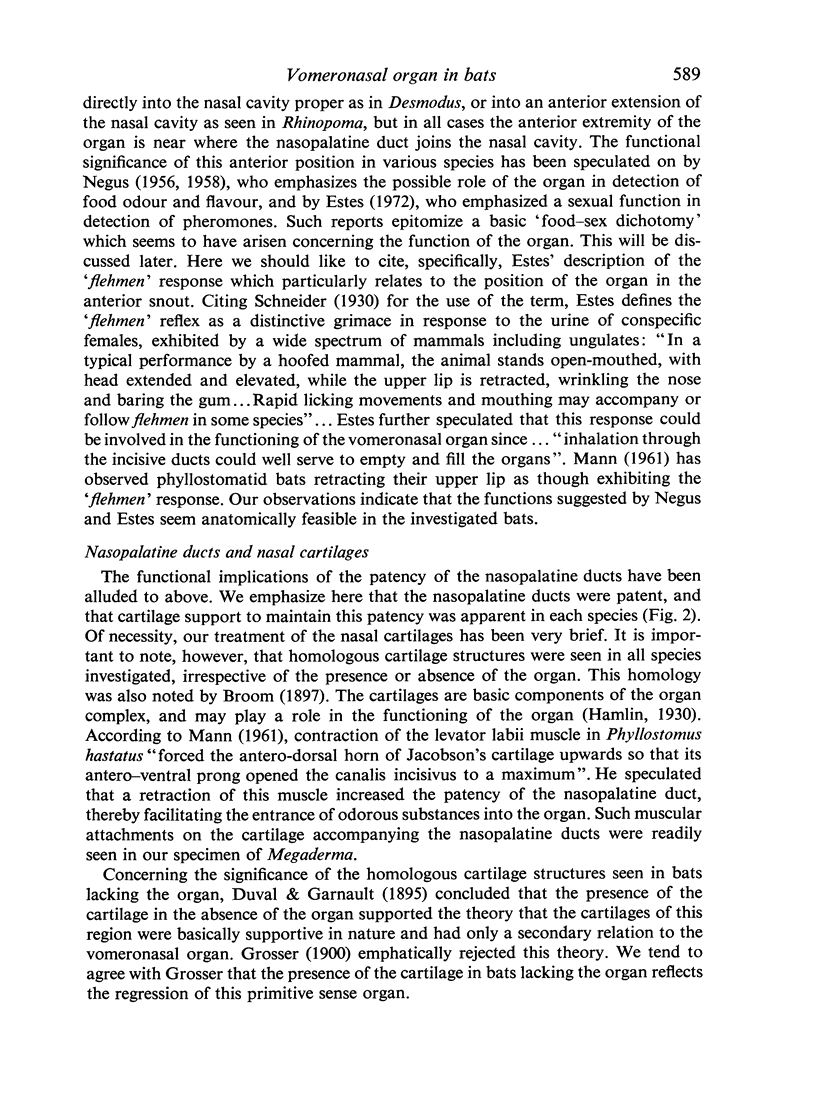
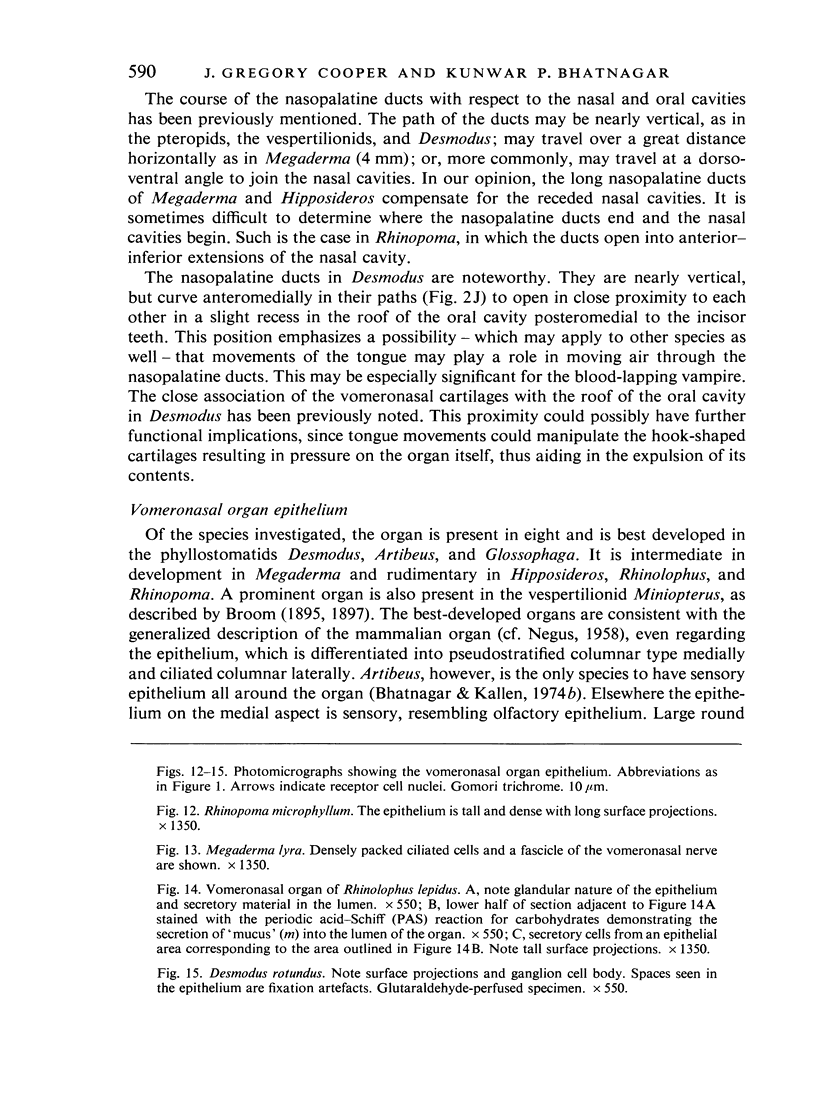
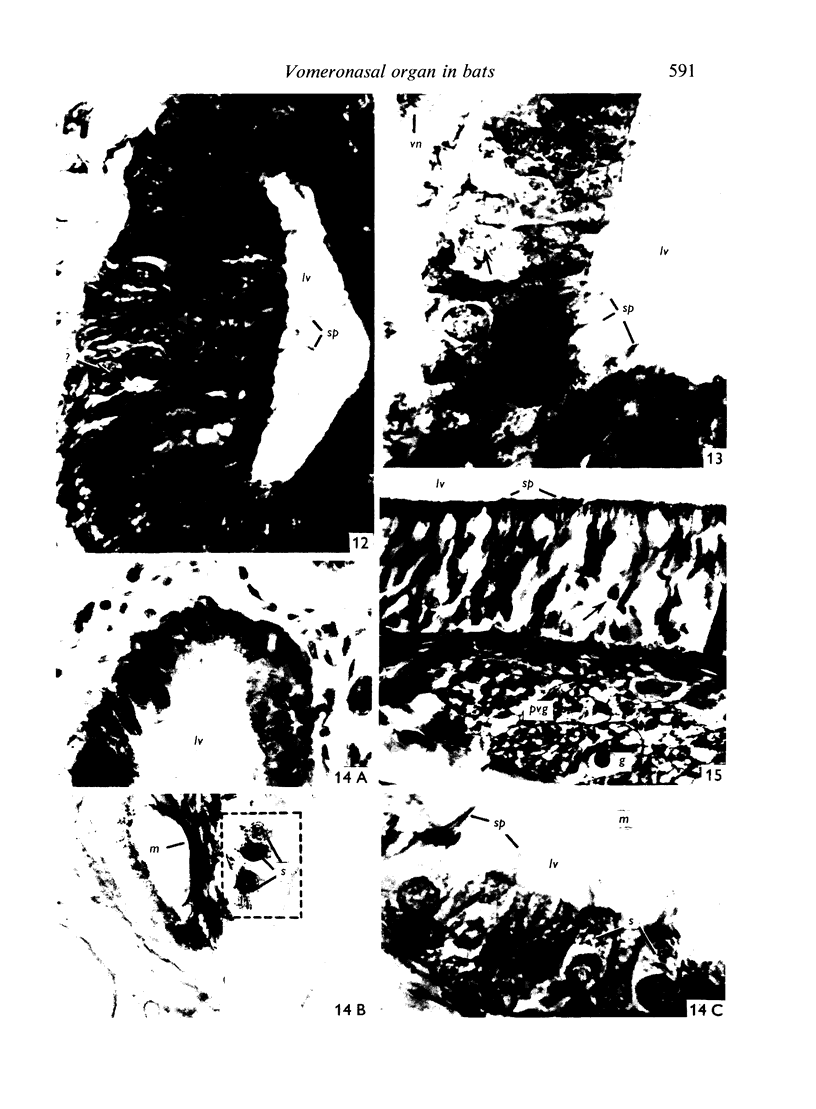
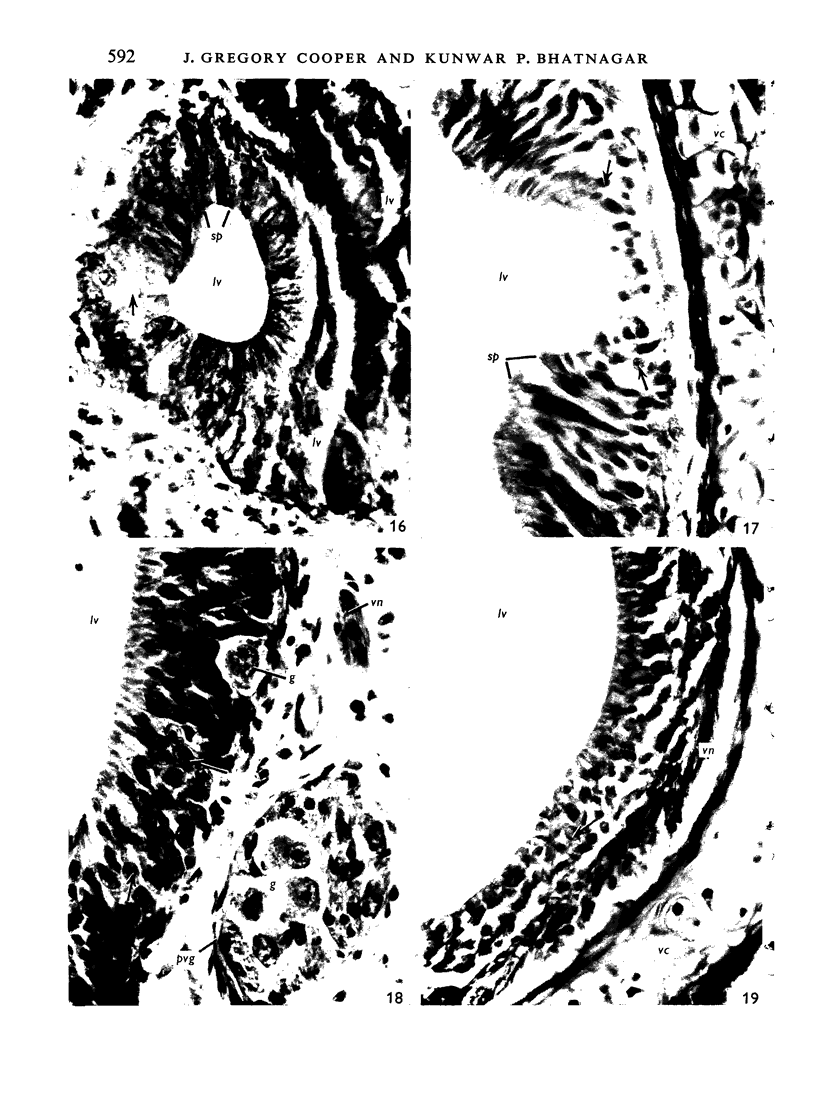
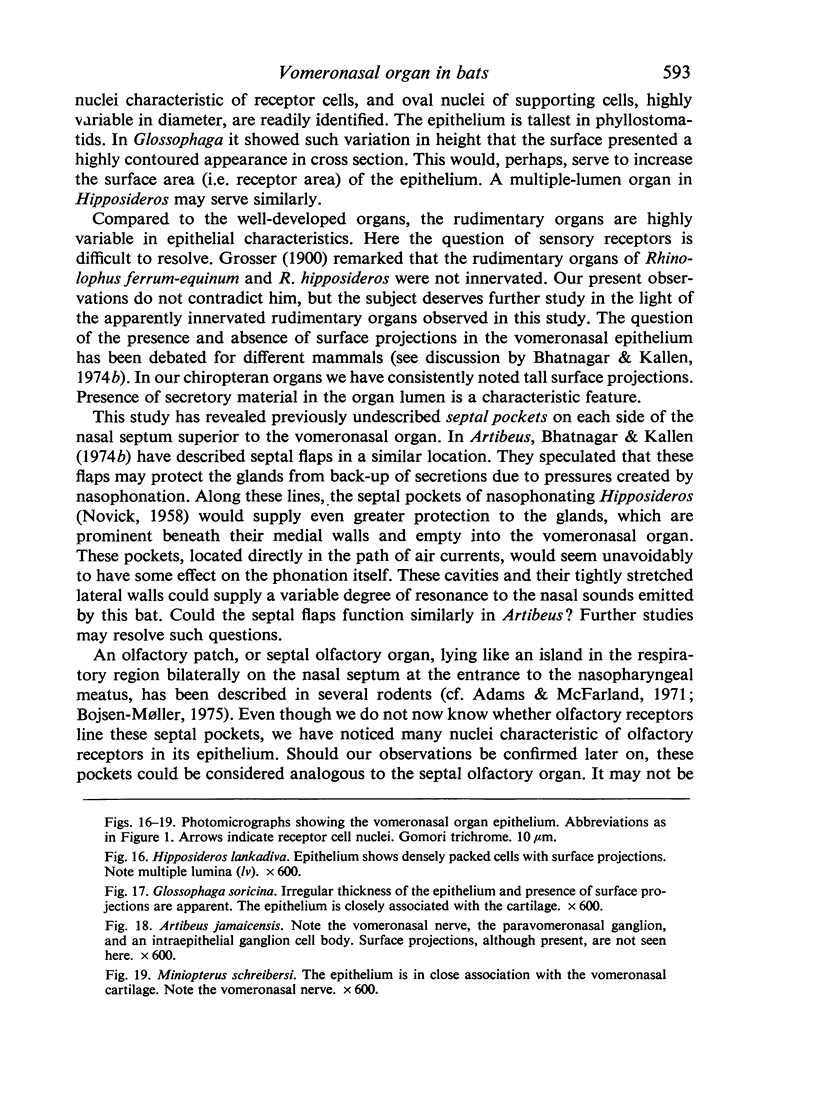
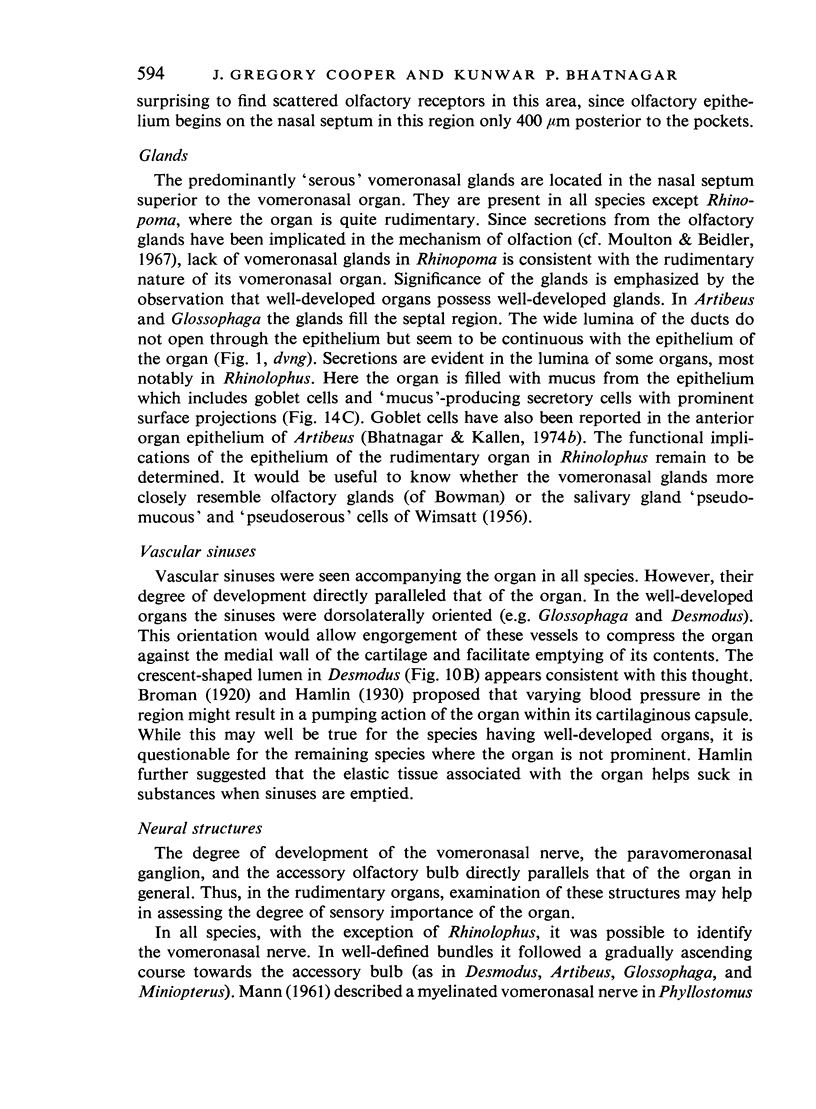
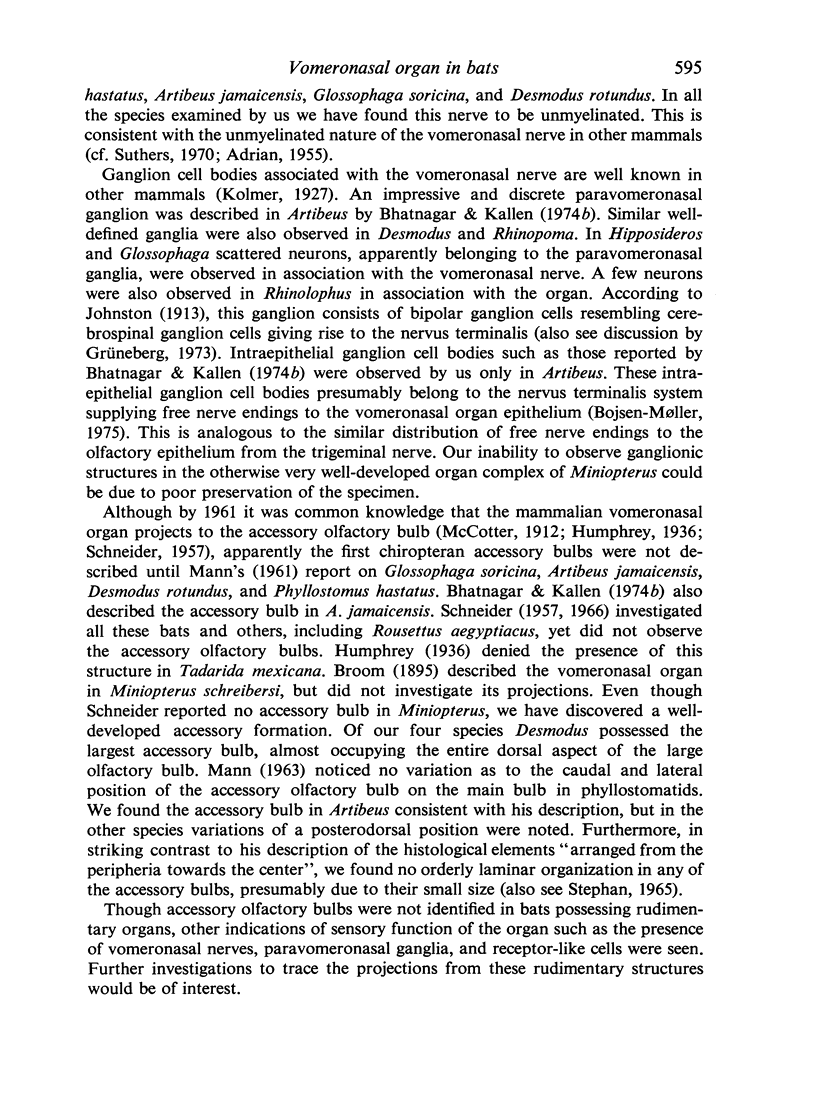
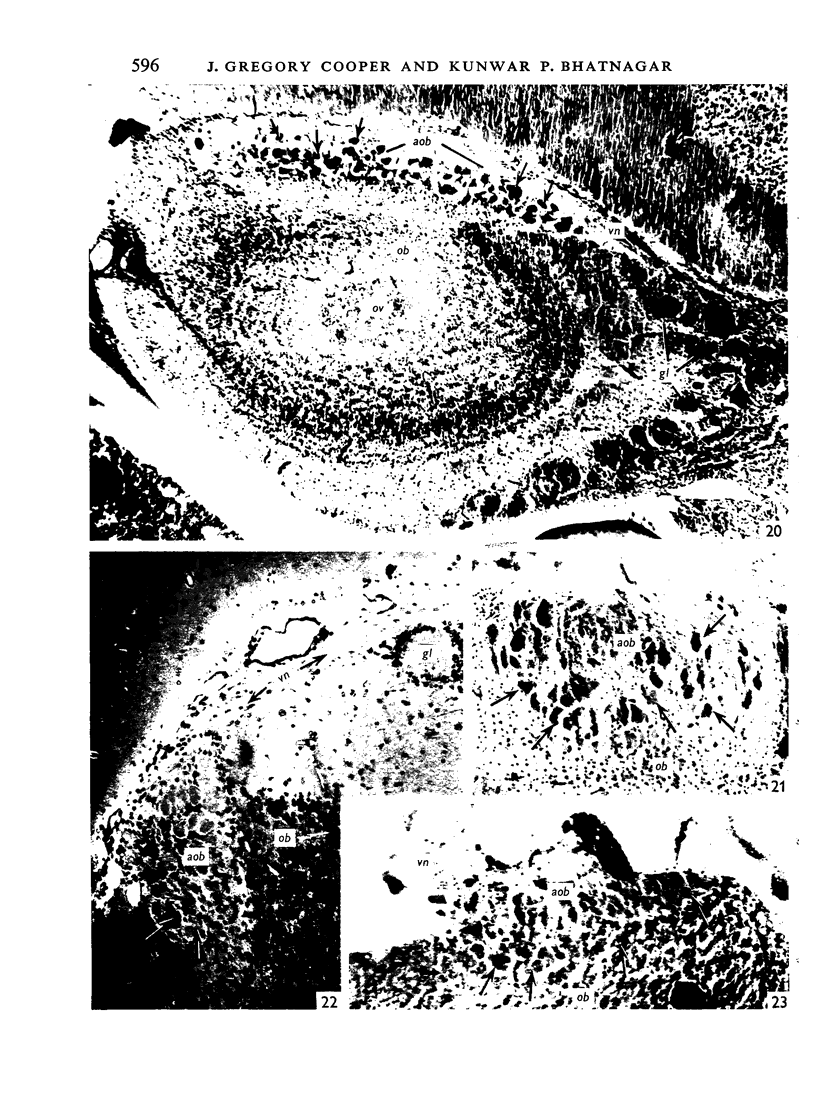
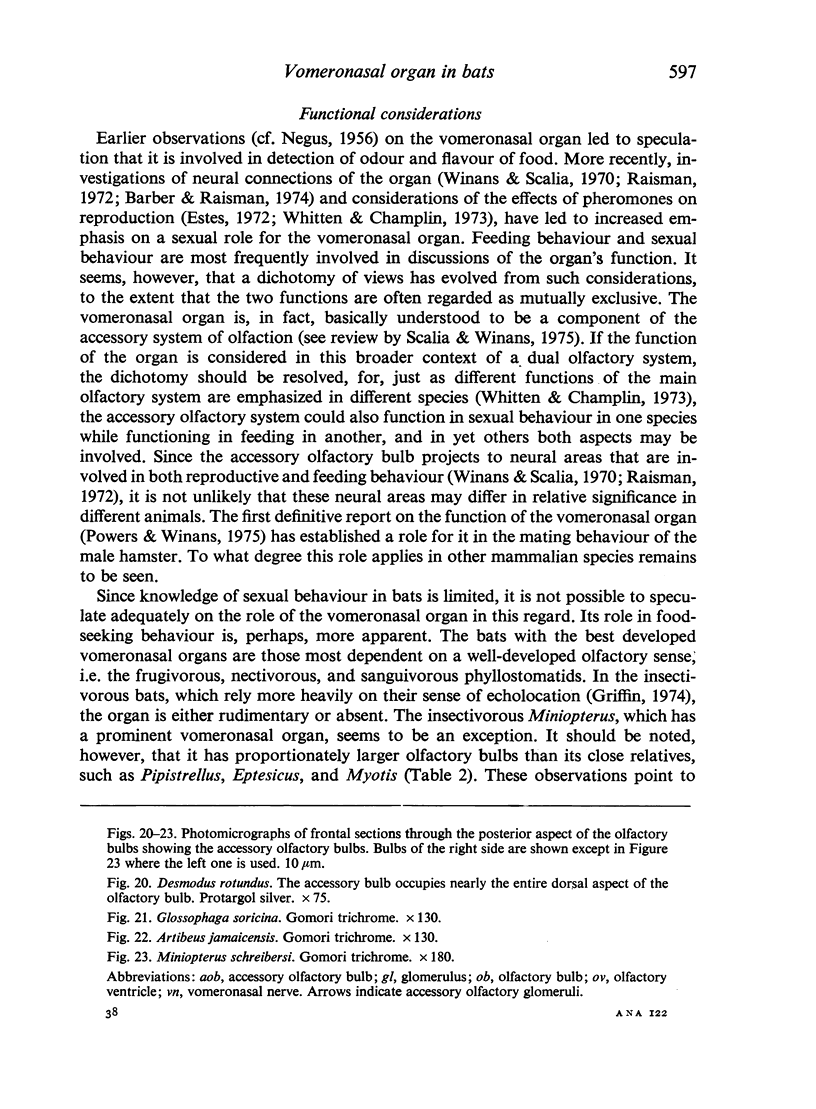
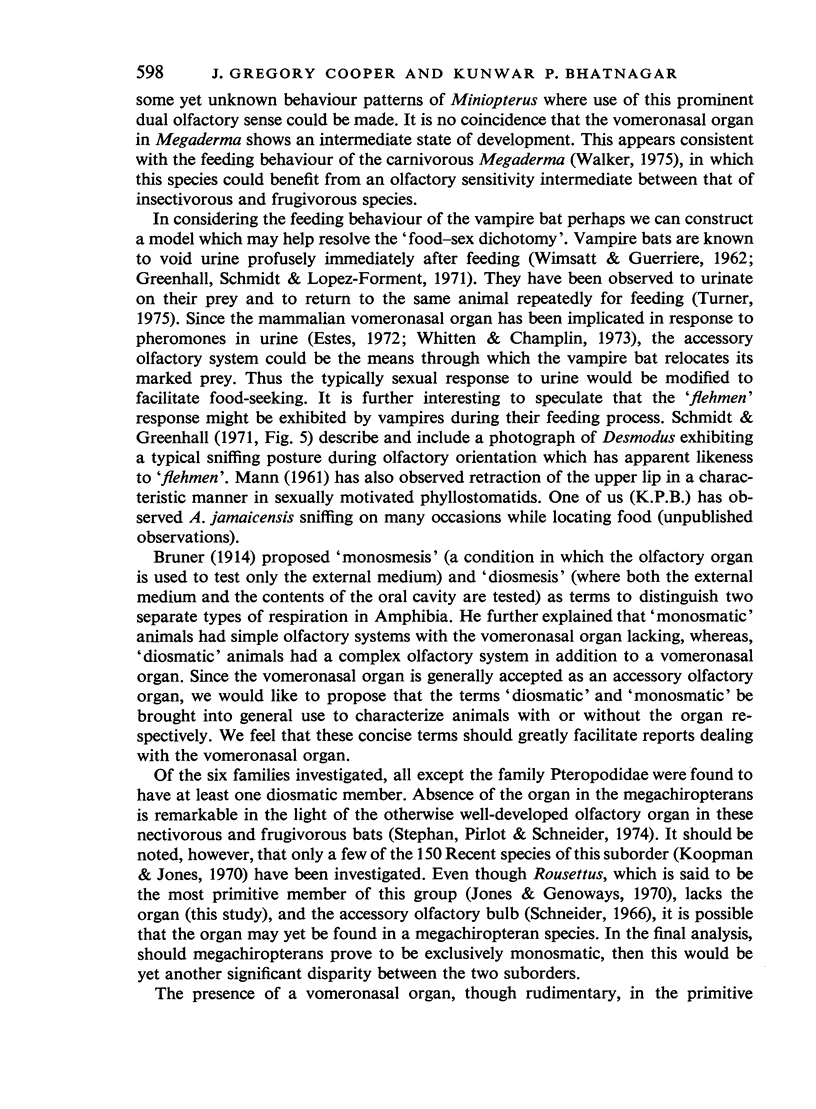
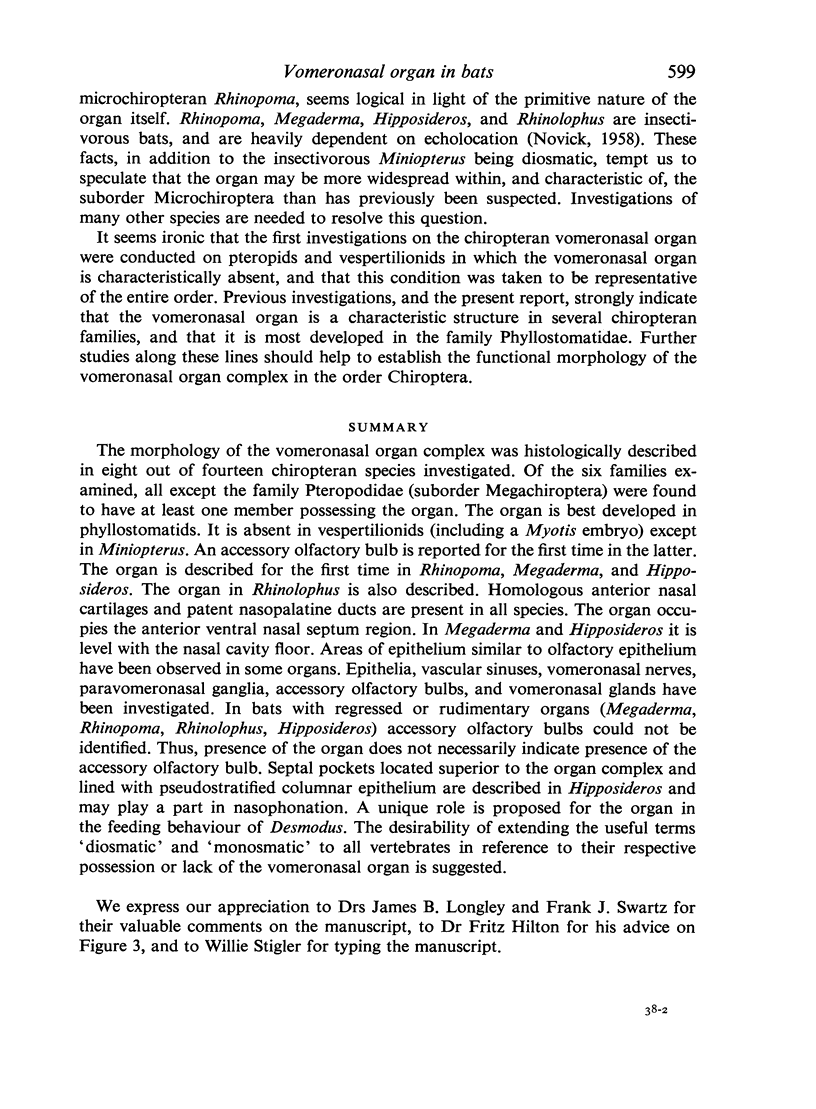
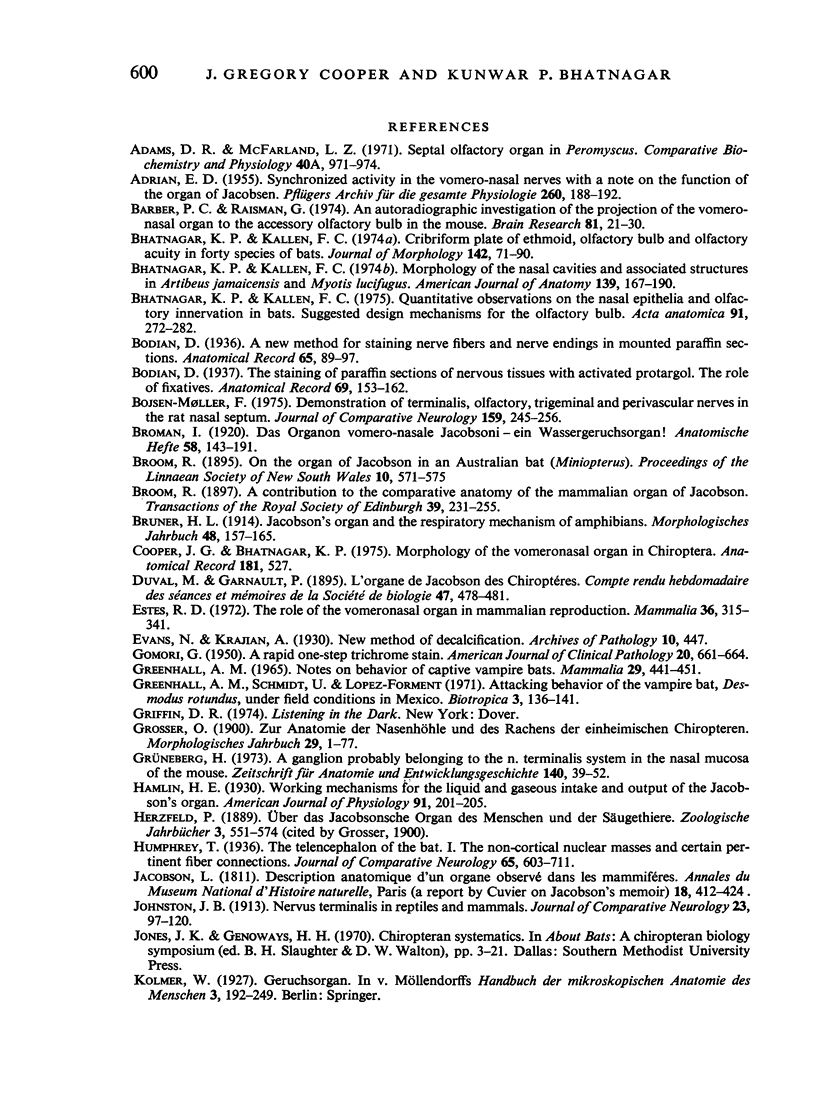
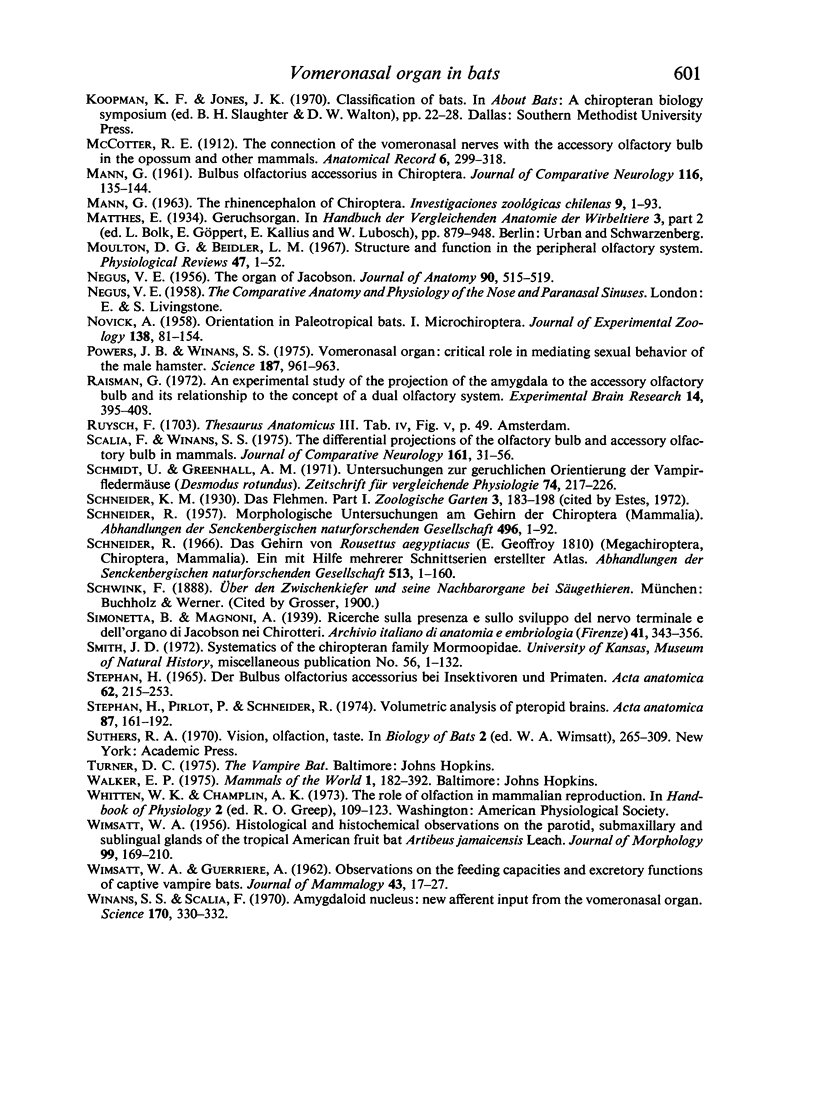
Images in this article
Selected References
These references are in PubMed. This may not be the complete list of references from this article.
- ADRIAN E. D. Synchronised activity in the vomero-nasal nerves with a note on the function of the organ of Jacobsen. Pflugers Arch. 1955;260(3):188–192. doi: 10.1007/BF00363383. [DOI] [PubMed] [Google Scholar]
- Adams D. R., McFarland L. Z. Septal olfactory organ in Peromyscus. Comp Biochem Physiol A Comp Physiol. 1971 Dec;40(4):971–974. doi: 10.1016/0300-9629(71)90285-4. [DOI] [PubMed] [Google Scholar]
- Barber P. C., Raisman G. An autoradiographic investigation of the projection of the vomeronasal organ to the accessory olfactory bulb in the mouse. Brain Res. 1974 Nov 29;81(1):21–30. doi: 10.1016/0006-8993(74)90476-4. [DOI] [PubMed] [Google Scholar]
- Bhatnagar K. P., Kallen F. C. Cribriform plate of ethmoid, olfactory bulb and olfactory acuity in forty species of bats. J Morphol. 1974 Jan;142(1):71–89. doi: 10.1002/jmor.1051420104. [DOI] [PubMed] [Google Scholar]
- Bhatnagar K. P., Kallen F. C. Morphology of the nasal cavities and associated structures in Artibeus jamaicensis and Myotis lucifugus. Am J Anat. 1974 Feb;139(2):167–189. doi: 10.1002/aja.1001390203. [DOI] [PubMed] [Google Scholar]
- Bhatnagar K. P., Kallen F. C. Quantitative observations on the nasal epithelia and olfactory innervation in bats. Suggested design mechanisms for the olfactory bulb. Acta Anat (Basel) 1975;91(2):272–282. doi: 10.1159/000144389. [DOI] [PubMed] [Google Scholar]
- Bojsen-Moller F. Demonstration of terminalis, olfactory, trigeminal and perivascular nerves in the rat nasal septum. J Comp Neurol. 1975 Jan 15;159(2):245–256. doi: 10.1002/cne.901590206. [DOI] [PubMed] [Google Scholar]
- GOMORI G. A rapid one-step trichrome stain. Am J Clin Pathol. 1950 Jul;20(7):661–664. doi: 10.1093/ajcp/20.7_ts.661. [DOI] [PubMed] [Google Scholar]
- MANN G. Bulbus olfactorius accessorius in Chiroptera. J Comp Neurol. 1961 Apr;116:135–144. doi: 10.1002/cne.901160204. [DOI] [PubMed] [Google Scholar]
- Moulton D. G., Beidler L. M. Structure and function in the peripheral olfactory system. Physiol Rev. 1967 Jan;47(1):1–52. doi: 10.1152/physrev.1967.47.1.1. [DOI] [PubMed] [Google Scholar]
- NEGUS V. E. The organ of Jacobson. J Anat. 1956 Oct;90(4):515–519. [PMC free article] [PubMed] [Google Scholar]
- NOVICK A. Orientation in paleotropical bats. I. Microchiroptera. J Exp Zool. 1958 Jun;138(1):81–153. doi: 10.1002/jez.1401380105. [DOI] [PubMed] [Google Scholar]
- Powers J. B., Winans S. S. Vomeronasal organ: critical role in mediating sexual behavior of the male hamster. Science. 1975 Mar 14;187(4180):961–963. doi: 10.1126/science.1145182. [DOI] [PubMed] [Google Scholar]
- Raisman G. An experimental study of the projection of the amygdala to the accessory olfactory bulb and its relationship to the concept of a dual olfactory system. Exp Brain Res. 1972;14(4):395–408. doi: 10.1007/BF00235035. [DOI] [PubMed] [Google Scholar]
- Scalia F., Winans S. S. The differential projections of the olfactory bulb and accessory olfactory bulb in mammals. J Comp Neurol. 1975 May 1;161(1):31–55. doi: 10.1002/cne.901610105. [DOI] [PubMed] [Google Scholar]
- Stephan H. Der Bulbus olfactorius accessorius bei Insektivoren und Primaten. Acta Anat (Basel) 1965;62(2):215–253. [PubMed] [Google Scholar]
- Stephan H., Pirlot P., Schneider R. Volumetric analysis of pteropid brains. Acta Anat (Basel) 1974;87(2):161–192. doi: 10.1159/000144169. [DOI] [PubMed] [Google Scholar]
- Winans S. S., Scalia F. Amygdaloid nucleus: new afferent input from the vomeronasal organ. Science. 1970 Oct 16;170(3955):330–332. doi: 10.1126/science.170.3955.330. [DOI] [PubMed] [Google Scholar]












